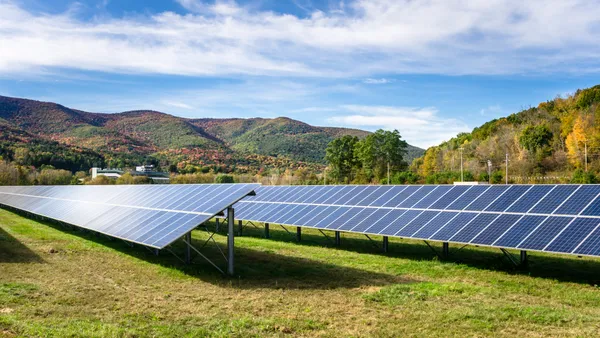Dive Brief:
- Google announced its first offshore wind deal in the Asia Pacific region this week, to receive power for its Taiwan data centers and offices from a Copenhagen Infrastructure Partners wind farm expected to become operational in 2027, according to a Tuesday release from the company’s official Taiwan blog.
- The global tech and search engine company said the wind agreement will join a renewable energy portfolio in Taiwan that recently added geothermal energy generation to its mix. Google had announced Taiwan’s first corporate geothermal deal on April 15, adding to its solar portfolio in the region.
- Google has a goal of reaching net-zero emissions across its portfolio by 2030, with a supporting target to run all of its global operations on 24/7 carbon-free power. The company reported a 13% year-over-year rise in emissions from 2023 to 2022 associated with the compute power needed by increased AI adoption and a change in its approach to carbon offsets.
Dive Insight:
Google’s purchase agreement will provide the company with power generated by Copenhagen Infrastructure Partners’ Fengmiao 1 Wind Farm. In exchange, the first phase of the Fengmiao farm will be the first fully financed project of the six wind farms CIP has in the third phase of development in Taiwan.
The wind purchase came a week after Google had announced a deal with geothermal energy developer Baseload Capital. That deal will add 10 megawatts of carbon-free power to Google’s portfolio in the region. The company was also responsible for signing the first corporate solar purchase agreement to help meet its Taiwan-based energy needs in 2019, and has since since signed an agreement with BlackRock’s climate infrastructure business to support the development of 1 gigawatt of solar development in Taiwan.
Google’s senior associate of energy infrastructure for the Asia Pacific region, Xiao Yijun, said in the April 22 announcement that the deal shows the company’s “commitment to driving innovative energy solutions in Taiwan and the Asia Pacific region.”
“By integrating offshore wind power, existing solar power and geothermal projects, we are taking concrete and solid steps toward our goal of 24/7 carbon-free energy, while also helping Taiwan develop new energy resources to meet the needs of growth,” Yijun said.
Google’s energy infrastructure expert also said the strategy of ensuring the company has enough clean energy capacity available to meet its needs at all times will also require the utilization of smart energy management technology. Google’s “carbon-smart computing platform” allows it to shift energy workloads to places where zero emissions energy is available, and Google is looking to build smarter grid technologies to help accommodate the energy needs of AI.
Google was also among a group of 14 global companies considered to be “large energy users” who signed a pledge to support tripling global nuclear energy capacity at S&P Global’s CERAWeek conference in March.
The company attributed its rise in emissions last year to the rising needs of AI and also reported a 48% increase in emissions, compared to its 2019 base year. The company aims to reduce its absolute emissions across its value chain 50% by 2030, compared to that base.
In the same report documenting the rise in emissions, Google said it had altered its approach to accounting for carbon credits. The company previously touted carbon neutrality from 2007-2022 by offsetting any of its residual operational emissions with carbon credits. A study by the Science Based Targets initiative, a global net-zero target validation, found that such an approach to corporate emissions accounting comes with “clear risks.”
No longer using those credits to offset emissions accounting, Google shifted to working to scale carbon removal solutions and reported contracting over $100 million in carbon removal credits in 2024. Those included deals to restore carbon sinks, enhanced rock weathering, biomass carbon removals and direct air capture. The tech giant also made deals representing “the largest biochar carbon removals to date” in January, with two agreements to collectively remove 200,000 tonnes of carbon dioxide from the atmosphere.












